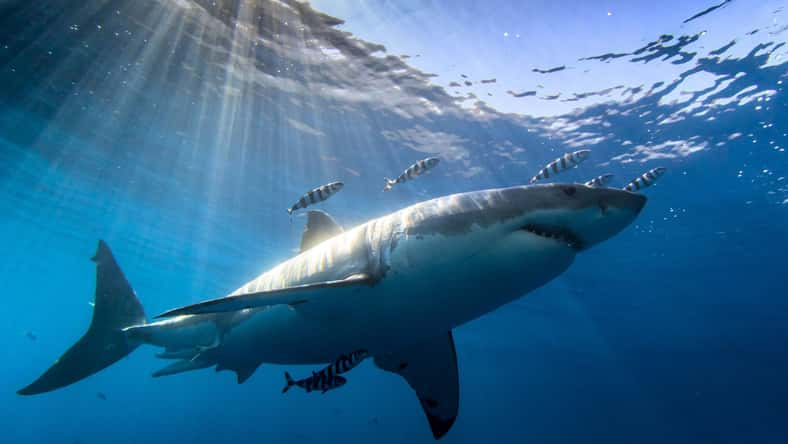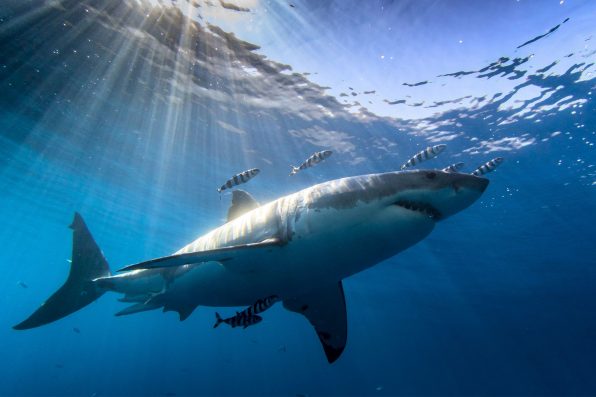A Great White Shark Near Bermuda Ate A Pregnant Porbeagle Shark With An Attached Tracking Device, Marking The First Documented Case In The World

In the first known case of its kind, a great white shark near Bermuda gobbled up a porbeagle shark with a tracking device attached to it. To make matters even more shocking, the porbeagle shark was pregnant!
Porbeagle sharks are found throughout the Northern Atlantic Ocean and parts of the oceans in the Southern Hemisphere. They can grow to around 12 feet in length and have muscular forms and long, sharp teeth. But in the end, all those menacing features are not enough for it to escape predation.
“This is the first documented predation event of a porbeagle shark anywhere in the world,” Brooke Anderson, the lead author of the study and a marine fisheries biologist at the North Carolina Department of Environmental Quality, said.
In October 2020, the pregnant female porbeagle was tagged with a satellite transmitter and a pop-off satellite archival tag (PSAT) near Cape Cod.
The devices aimed to track the shark and collect data on her depth and geographical range over time. Satellite transmitters are permanent, but the PSATs are removed after a year.
The depth of a porbeagle is measured by temperature and pressure data from the PSATs. Any irregularities in temperature and pressure indicate that the shark has died or the tag somehow came off.
In this case, the porbeagle shark moved between the ocean surface and 328 feet below until December 2020. That was when she began diving up to 2,600 feet deep during the day and floated at about 650 feet during the night. As she moved south toward waters off the shore of Bermuda, she maintained the pattern.
On March 24, 2021, temperature patterns indicated that the depth had changed drastically. Previously, the shark had been swimming through waters that ranged from 43.5 to 74.3 degrees Fahrenheit.
But on that day, the tag recorded temperatures between 61.5 to 76.5 degrees Fahrenheit, even though it remained at a similar depth.

Marty – stock.adobe.com – illustrative purposes only, not the actual shark
The researchers believed that the change meant the tag was in the stomach of another shark because the temperatures were warmer than they should’ve been at those particular depths.
According to the study authors, there were only two sharks in the area large enough to consume a porbeagle shark—the great white shark and the shortfin mako.
Based on the stable depth range of the tag when it was ingested, it seemed more likely that the predator was a white shark. Makos tend to dive deeper and surface more rapidly.
Currently, porbeagles are at risk due to a history of overfishing. The IUCN lists the species as vulnerable. The new finding speaks volumes about the state of the porbeagle population.
“The predation of one of our pregnant porbeagles was an unexpected discovery,” said Anderson. “We often think of large sharks as being apex predators. But with technological advancements, we have started to discover that large predator interactions could be even more complex than previously thought.”
The paper was published in Frontiers in Marine Science.
Sign up for Chip Chick’s newsletter and get stories like this delivered to your inbox.
More About:Animals





